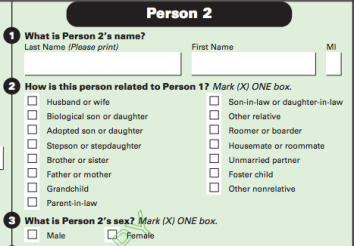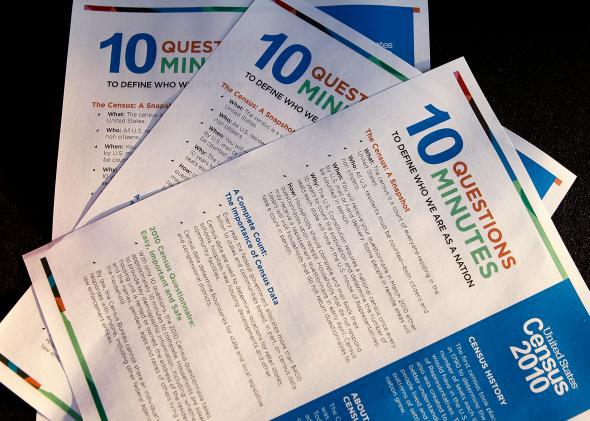Last week, the Census Bureau announced that about 252,000 gay married couples live in the United States as of 2013, following its first ever attempt to gather data on gay spouses, part of the annual American Community Survey. This figure, however, came coupled with the caveat that it was almost certainly incorrect—because, the bureau explained, counting gay couples is really, really hard.
Why is collecting data on same-sex spouses so difficult? Much of the blame falls on the bureau itself. Rather than simply ask each respondent the obvious question—“Are you married to a person of the same sex?”—the bureau decided to play coy, posing a series of somewhat enigmatic inquiries, all designed to reveal a respondent’s homosexuality without forcing him to state it directly.

United States Census Bureau
In theory, this obliquity is clever: The bureau is concerned that many gay couples, still familiar with the trauma of government-sponsored discrimination, will refuse to squarely disclose their relationship on the census. In practice, though, it’s a disaster. Apparently, some straight, married census-takers—perhaps bewildered by the labyrinth before them and eager to get it over with—accidentally mark the wrong gender on the form, unintentionally declaring themselves to be in a gay marriage.
The bureau ran into this exact same problem when it first started counting same-sex couples in 1990. (Back then, the bureau didn’t bother counting gay married couples, since they didn’t exist.) But while census-takers takers recognized and decried the problem after the 2000 census, they have done nothing to fix it in the interim. As a result, the figure released last week—and all data on gay relationships ever released by the Census Bureau—is likely inflated.
Although bad statistics are always irritating, the bureau’s negligence here is particularly troubling given the role that gay couples have played in the judicial debate over same-sex marriage. Several federal judges have cited the high number of gay couples in America as a reason to require marriage equality in every state, and the prevalence of these couples may well factor into the Supreme Court’s inevitable ruling on the matter. It would be helpful to have solid statistics to present to the justices while they consider the harm anti-gay marriage laws inflict on gay Americans. But while the bureau has declared its intention to count gay couples more directly in the future, it seems that, for the time being, we’re stuck with this messy estimate.
